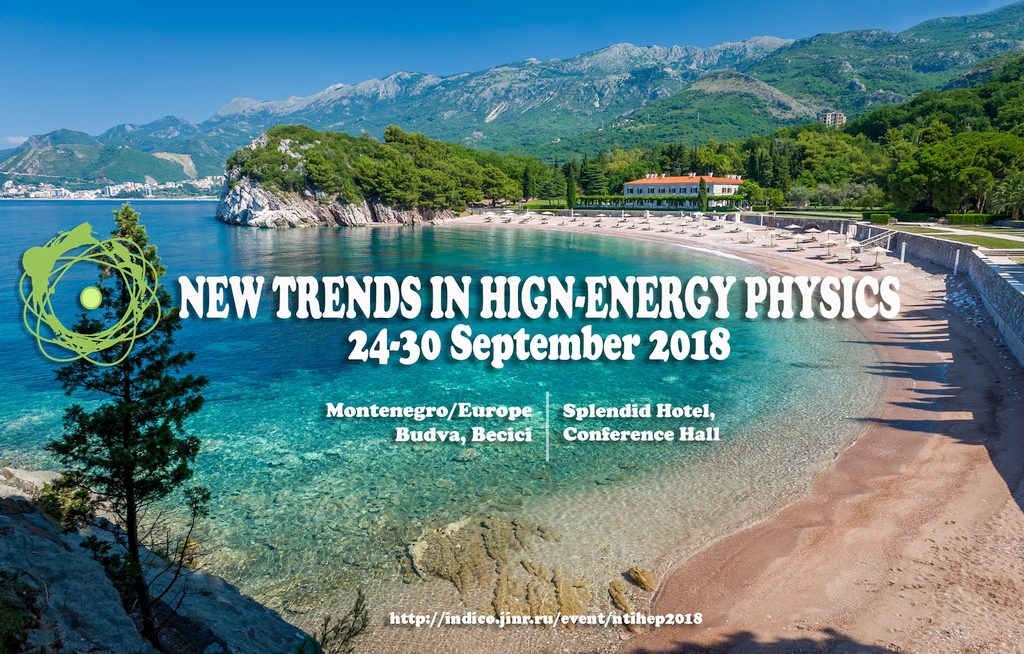Speaker
Mrs
Irina Zarubina
(Joint Institute for Nuclear Research)
Description
In spite of the fact that nuclear track emulsion (NTE) was developed more half a century ago, it still remains a universal and cost-efficient detector. The application of NTE is especially well grounded where tracks of nuclear particles cannot be reconstructed using electronic detectors. At the JINR Nuclotron the BECQUEREL experiment [1] is performed a program of irradiation of NTE stacks in the beams of relativistic isotopes of beryllium, boron, carbon and nitrogen, including radioactive ones to study their cluster structure. Сharge-topology distributions of final states have an individual character appearing to be some kind of a signature of the isotope under study. The NTE technique allows one to observe the 3D images of few-body ensembles originated in peripheral collisions and explore the fragmentation of the relativistic nuclei down to the most peripheral interactions - nuclear “white” stars [2].
The competitive character of the novel NTE is proved in measurements of slow α particles and heavy ions (summarized in [3]). The possibility of α spectrometry was verified and the atom drift effect is established in measurement of decays of 60 MeV 8He nuclei implanted in NTE [4]. Correlations of α particles in splitting of 12C nuclei by 14.1 MeV neutrons [5] as well as 7Li and 4He nuclei produced in 10B breakup by thermal neutrons in boron-enriched NTE [6] are studied. NTE samples were irradiated with slow Kr and Xe ions [7,8]. Surface irradiations of NTE samples were performed with automatic movement of the 252Cf source [9].
Recently, samples of reproduced NTE were also irradiated with 2.5 and 160 GeV muons (started in [10]). Such irradiation allows one to study few-body fragmentation under the action of an electromagnetic probe [11]. Multiphoton exchange or virtual photon–meson transformations can serve as the fragmentation mechanisms. It was established that the breakup of carbon nuclei into trios of α particles has a nuclear diffraction rather than electromagnetic character. Thus, the connection of high energy and low energy nuclear physics appears.
Classic observations of fundamental importance presented in “The Study of Elementary Particles by the Photographic Method” by C. H. Powell, P. H. Fowler and D. H. Perkins can serve as a model of clarity in our time. Our research is implemented in keeping with this tradition by state-of-art means. The rich collection of videos and images of the nuclear few-body processes gathered at the Web site is presented [1]. In terms of applications they are relevant for the development of advanced systems of automatic search for nuclear interactions, as well as for university education.
References
1. The BECQUEREL Project WEB site: http://becquerel.jinr.ru/
2. http://becquerel.jinr.ru/movies/movies.html
3. P. I. Zarubin “Recent applications of nuclear track emulsion technique” Phys. At. Nucl., 2016, 79, 1525-1535; DOI: 10.1134/S1063778816130093. https://link.springer.com/article/10.1134/S1063778816130093
4. http://becquerel.jinr.ru/miscellanea/8He/8He.html
5. http://becquerel.jinr.ru/miscellanea/DVIN/dvin11.html
6. http://becquerel.jinr.ru/miscellanea/IBR-2/IBR-2.html
7. http://becquerel.jinr.ru/miscellanea/IC-100/IC-100.html
8. http://becquerel.jinr.ru/miscellanea/U400M/U400M.html
9. http://becquerel.jinr.ru/miscellanea/Prague-dosimetry/Prague-dosimetry.html
10. D. A. Artemenkov et al. “Study of nuclear multifragmentation induced by ultrarelativistic μ-mesons in nuclear track emulsion” J. Phys.: Conf. Ser. 675 022022. http://iopscience.iop.org/article/10.1088/1742-6596/675/2/022022
Author
Mrs
Irina Zarubina
(Joint Institute for Nuclear Research)

